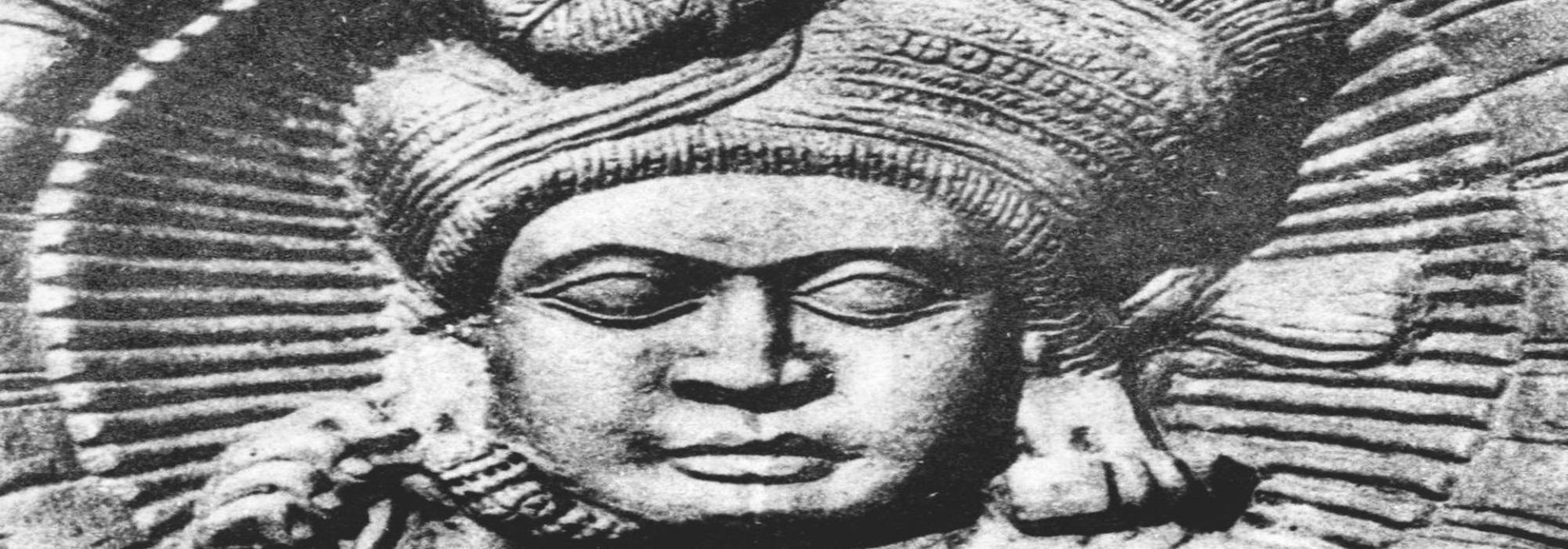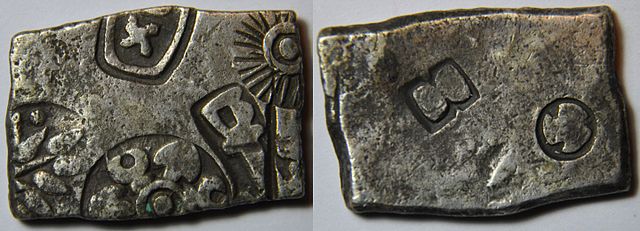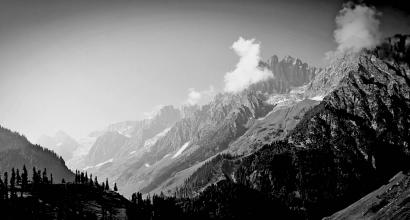Marxist-Communist historians claim that because Pushyamitra Shunga was a brāhmaṇa, all events that occurred during his period were merely the revolt of brāhmaṇas. These incidents symbolize the enmity that brāhmaṇas had against Ashoka and his heritage. Contrary to their claims, varṇa doesn’t occupy a significant place in this.
The Shungas weren’t in power for a long period. The Kanvas, who succeeded them were brāhmaṇas too. If the Shunga reign was indeed a brāhmaṇa rebellion, the Kanvas should not have opposed them. In the realm of authority and position, considerations of varṇa and morality are only secondary to the human impulse of Selfishness. People from all social backgrounds succumb to avarice. The main challenge that arose back then was the responsibility of national security. When the commander Pushyamitra realized this, he assumed the reins of power.
Others claim that Pushyamitra Shunga was an enemy of Buddhists, he destroyed the foundational texts of Buddhism, and murdered Buddhist bhikkus. But then, they forget an important fact in this context: The Bharhut Stūpa is among the most exquisite stūpas of ancient India with extraordinary sculptural craftsmanship. It was entirely commissioned and built under the supervision of Pushyamitra Shunga. Similarly, the exceptional balustrade surrounding the Sanchi Stūpa standing resolute till date, was built by the selfsame Pushyamitra Shunga.
It was the Shatavahanas who built the four ornate doors outside the balustrade. The Shatavahanas were not Buddhists, but firm adherents of the Vedic tradition. They performed grand yajñas like Aśvamedha and Vājapeya. It was the same Shatavahanas who built the stūpa at Nagarjunakonda. When we notice the pravaras of the Shatavahana kings—Gautamiputra Shatakarni, Vasishtiputra Shatakarni, etc.—it becomes evident that their mothers too were kṣatriyas and retained the gotras belonging to tradition of the hallowed Vedic ṛṣis. The archaeological remnants of their yajña altars survive to this day.[1]
In those times, even the adherents of the Vedas did not reject Buddhism. The Shatavahanas built not merely the doors to the Sanchi Stupa, but built the entire stupa at Amaravati. Some of their remains are on display at the Madras Museum and the British Museum. The sort of hostility[2] that exists today among the Hindus, Buddhists, and Jains never existed in those times even at the level of the Rājagurus. The authors of some sectarian works might have been roused by attachment towards their chosen sect and hatred towards the others. It will be erroneous to ascribe such sectarian zeal both to the common folk and to the kings. Besides, a text like Ashokavadana authored by fanatic Buddhists, which is far from the truth cannot be held as a primary source. Further, the Shunga-haters cleverly gloss over the mention of Ashoka’s mass murder of Jains in the same Ashokavadana. How shall we label this chicanery? Therefore, one must be careful while relying on the mythical narrations found in sectarian works.
It is also worth recalling that in Pushyamitra Shunga’s time, several Buddhists were sentenced for treason for colluding with foreign invaders. We can examine this in detail when we discuss the Gupta period.
Magnanimity of the Indian Tradition of Kṣātra
The pre-eminent among the Guptas was Chandragupta Vikramaditya (Chandragupta II), a great bhāgavata (devotee of Viṣṇu). His son Kumaragupta worshipped both Śiva and Skanda. Father and son worshipped different deities. What does this show? Though their personal preference was Śiva or Skanda, they did not impose it upon their subjects. Several records show that Kavikulaguru Kālidāsa, a supreme devotee of Śiva, was in the court of the great Viṣṇu devotee Chandragupta Vikramaditya.
All the mayhem surrounding Śaiva, Vaiṣṇava, Śākta, etc. was restricted to a few people who took mythological ideas literally and wrote about them as if they were real episodes. We can notice sectarian hostility in Buddhist, Jain, and <Sanatanic> texts. For instance, the Madhaviyashankaravijaya has been attributed to Vidyaranya. In reality, Vyasachala, an obscure poet, has composed this work. As a work of poetry, it is good, but in many places, it is historically inaccurate and far from the truth. In places, it also defames ācārya Śaṅkara. “There was a king named Sudhanva. The Mīmāṃsā scholar Kumarilabhatta adorned his court. There was a clash between him and the Buddhists. The defeated Buddhists were boiled in water mixed with slaked lime (Calcium Hydroxide) and were used in oil-pressing labour.” The text contains this and several other outlandish episodes. In the history of India, we don’t find any king with the name of Sudhanva – be it among the Magadhas, the Vidarbhas, the Cholas, the Cheras, the Pandyas, or the Pallavas. Ācārya Śaṅkara lived between 630-662 CE. This dating is the result of rigorous scientific research in recent years. Therefore, it becomes evident that the author of Madhaviyashankaravijaya was imbued with sectarian fanaticism.
Rāmanuja’s guru was the Advaiti Yadavaprakasha. The historical fact, however, is that he was not an advaiti. His Brahma-sūtra-bhāṣya is itself sufficient proof for this. Yadavaprakasha followed the bhedābheda school of Vedānta. This is quite close to the Rāmanuja school of philosophy. Sectarian texts baselessly allege that Yadavaprakasha tortured Rāmanuja badly. No historical evidence exists for such allegations. There are also stories that Krimikanta Chola (Karikala Chola) conspired to assassinate Rāmanuja. In truth, this is a great insult to both Rāmanuja and the Chola king. In fact, we do not see the name of this king in history! The Cholas were not zealous Saivaites. They patronized all sects equally. Several stotras and poems in praise of Viṣṇu were composed in the Chola period. In the grand Chola temples, we see many beautiful vigrahas of Viṣṇu.
Any Hindu king who was extremely sectarian could never hope to rule over his subjects. It was impossible to survive by inflicting tyranny upon the people. The religious tolerance during Akbar’s reign was absent in Aurangzeb’s regime, which is why he faced such widespread rebellion.[3] It is a fact that Pushyamitra Shunga was a liberal ruler, who greatly respected all sects.
There is also an allegation that the Guptas were enemies of Buddhists. But a study of history will show that the great Buddhist Vasubandhu was a minister in the court of Samudragupta.
To be continued…
Translated by Sandeep Balakrishna and Hari Ravikumar from the Kannada original.
[1] In recent times, a few malicious minds have claimed that Adi Shankara destroyed the stupas at Nagarjunakonda. Based on rumours and concocted legends, they have built an evil edifice of distorted history and are savouring its luxuries. However, several years ago, great scholars like Bharat Ratna Pandrurang Vaman Kane and Govinda Chandra Pande demolished such theories as naked lies. Besides, the yajna altars and caityas at Nagarjunakonda have also been ruined. It is beyond doubt that these monuments as well as the stupa were decimated by the dear friends of the Communist historians, the barbaric Islamic hordes.
[2] Translators’ Note: It must be noted that the ‘hostility’ between these schools (of philosophy) amounts to verbal duels and name-calling; physical violence is neither prescribed nor practiced against the other. In the entire history of India, the violent confrontations between these schools have been minimal to the extent of being non-existent. It is incomparable to the extreme violence that characterizes the Abrahamic religions – both amongst themselves as well as against non-Abrahamic systems.
[3] Translators’ Note: The notion of Akbar’s religious tolerance and magnanimity towards Hindus must be seen in the context of the larger history of Hindu and Islamic empires. It must be contrasted with the typical religious bigotry of an average Muslim king all the way from the Delhi Sultanate and Akbar’s grandfather, Babur. Therefore, Akbar’s so-called religious tolerance was an aberration and when juxtaposed with the average Hindu king, he pales in comparison.






































